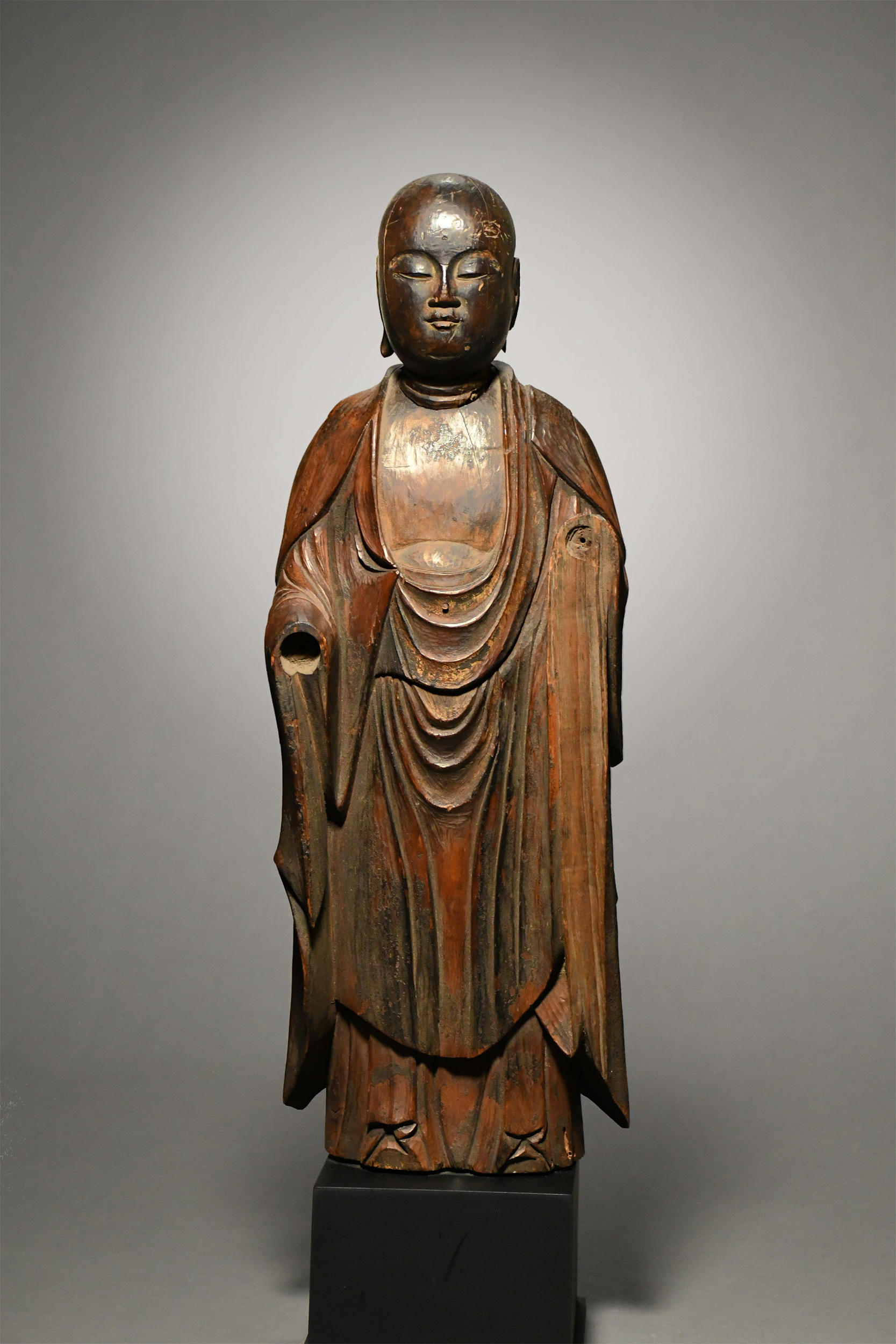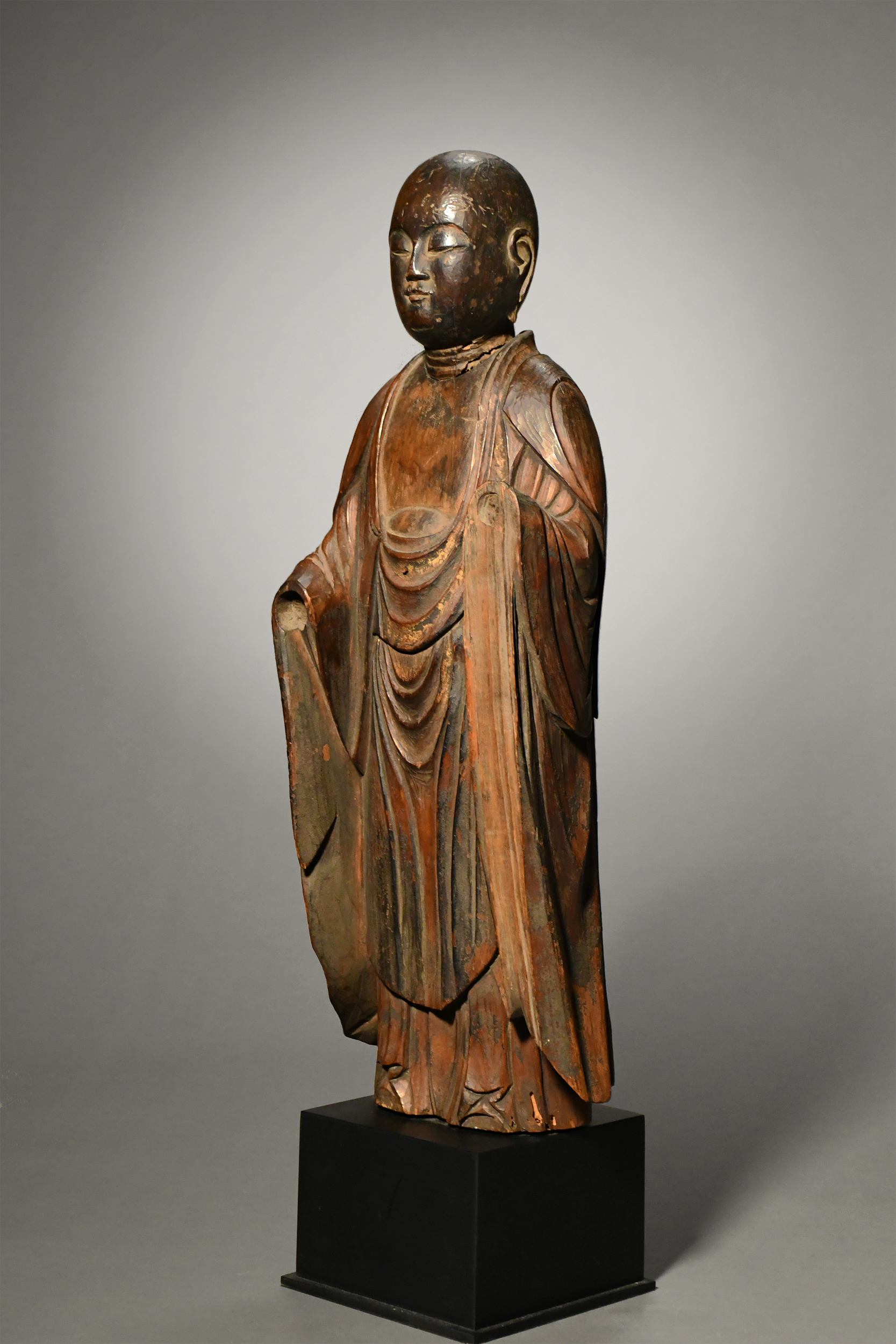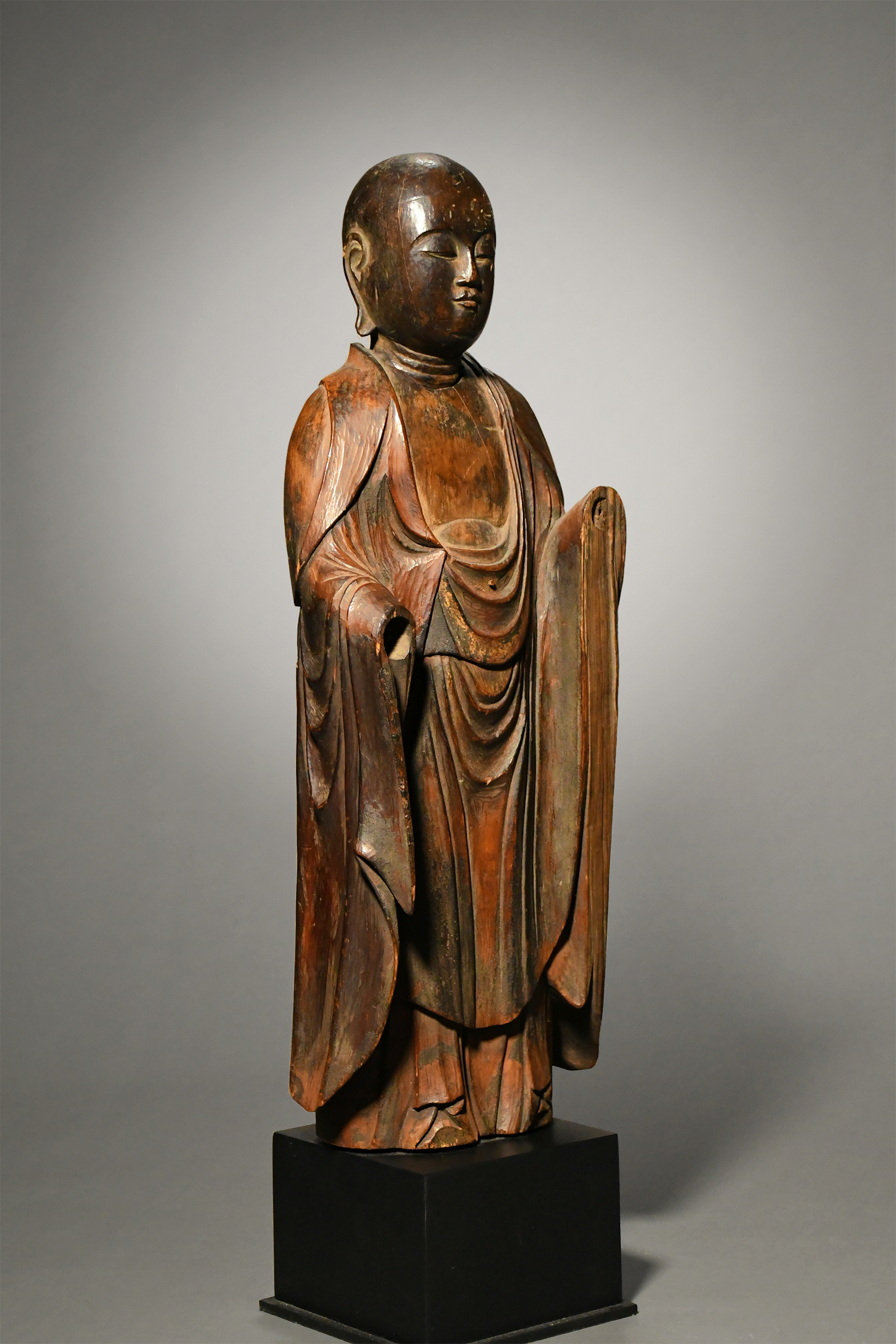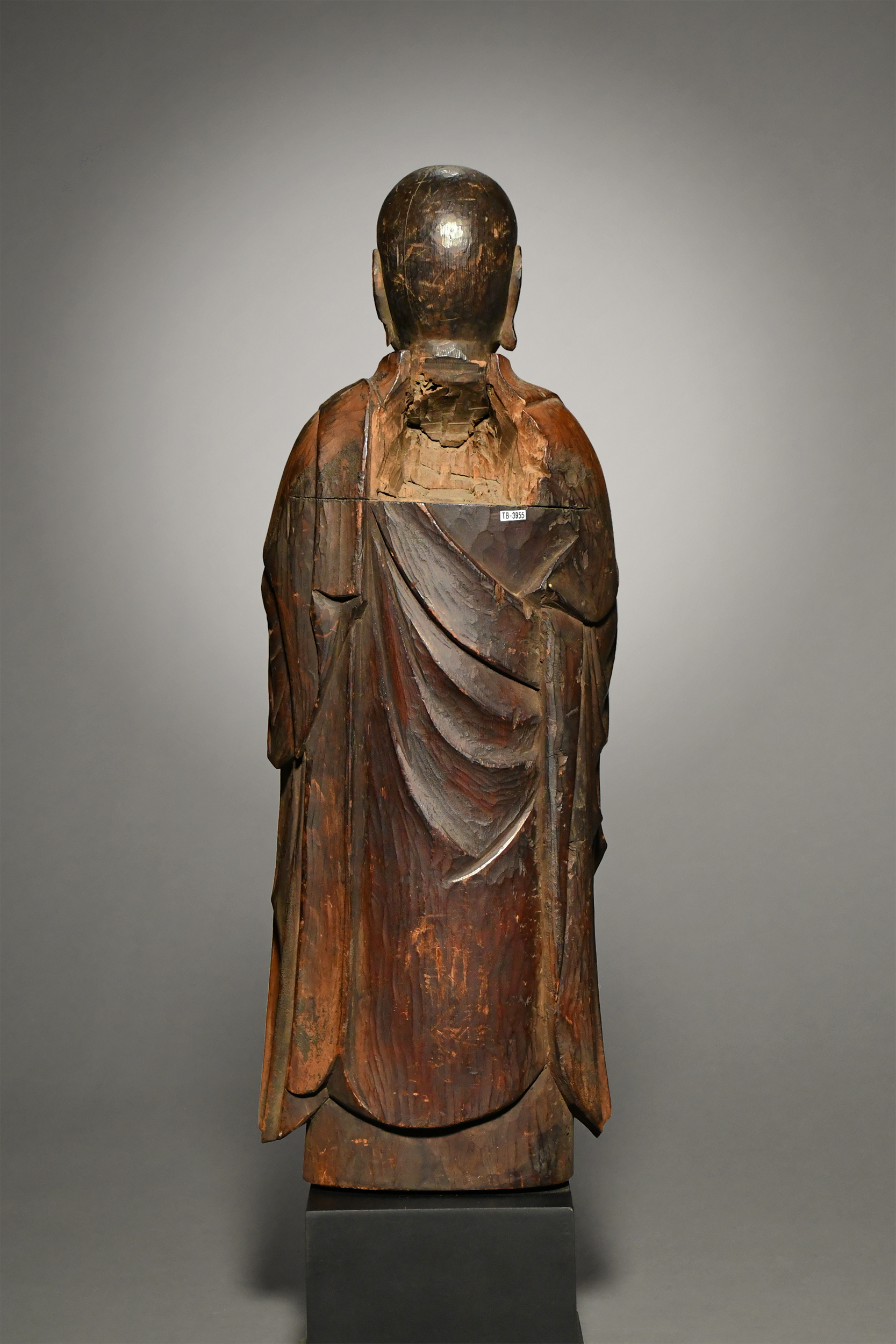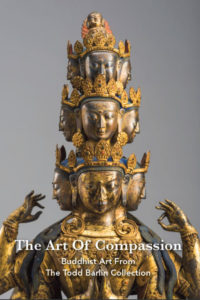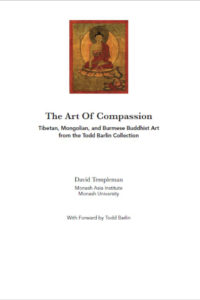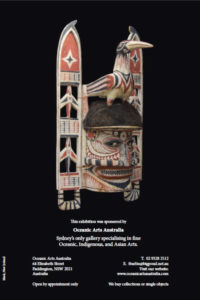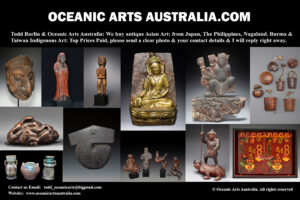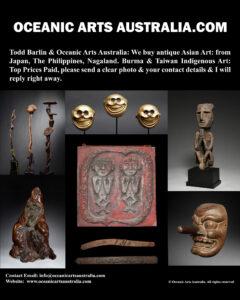A Fine Old Japanese Jizō Bosatsu Buddha of Compassion Edo Period 19th Century Japan
| Collection No. | TB-3955 |
|---|---|
| Size | Height: 47.5cm |
A Fine Old Japanese Jizō Bosatsu Buddha of Compassion from the Edo Period 19th Century Japan
Jizō Bosatsu is an enlightened being who, out of compassion, has chosen to lead others along the Buddhist path. In Japan, he is best known for protecting children and travellers. Jizō’s compassionate presence illuminates the righteous way, and he saves from harm those who call out to him.
Bodhisattvas (Japanese: bosatsu) are Mahayana Buddhist deities who have achieved all of the spiritual requirements necessary for leaving the cycle of rebirth and attaining the state of nirvana, but who, out of compassion for others, vow to remain within the six realms of existence to aid other aspirants along the path to liberation. Each bodhisattva makes a unique set of vows; bodhisattvas’ attributes and the ways in which they assist others reflect those vows.
The bodhisattva Jizō made the specific vow not to enter into nirvana until all beings have been rescued from suffering.
Jizō became known in Japan in the eighth century, with the introduction of esoteric Buddhism from China, but worship of him became widespread within the context of Pure Land Buddhist devotional practices in the Heian period (794–1185).
Jizō is unusual among bodhisattvas for the manner in which he is normally represented. Bodhisattvas are generally clothed in finery and adorned with jewels; a symbolic representation of their superior qualities based upon the actual garb of early Indian royalty. In contrast, Jizō in his most common form is a monk with a shaven head, he is clad in a simple monk’s robe, and in this example, both arms are missing but it does not take away from the great beauty of the figure, the face is glowing. This artwork was made by a very skilled and confident artist in the 19th Century. Carved from medium-density wood in two pieces; the head is a separate piece of wood & skilfully socketed into the body as clearly seen in the back-view photo. There are remnants of lacquer & gilding on the robes and his face.
The figure has brought great joy to my home & I never get tired of looking at his peaceful face.
Provenance: The Todd Barlin Collection of Buddhist & Japanese Art
INQUIRE HERE
To see many more rare items and the finest masterpieces, please make an appointment with us to visit the gallery.
For all inquiries, please contact us.

